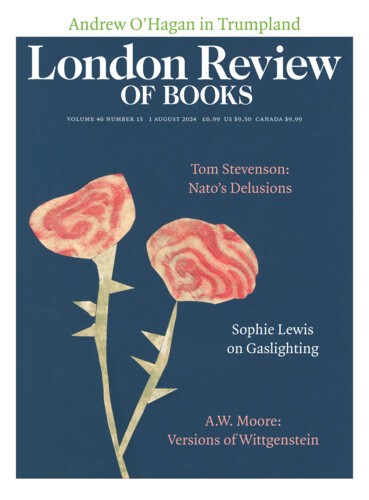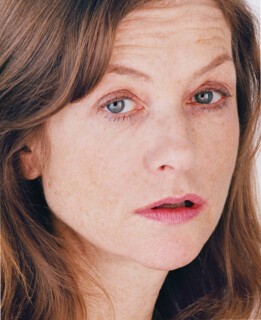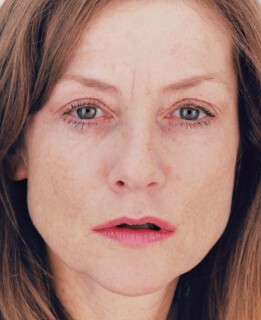Entering Give Me Paradox or Give Me Death, Roni Horn’s retrospective at Museum Ludwig in Cologne (until 11 August), you’re flanked by 96 photographs of her niece Georgia. The two grids of 48 seem to match until you’ve swivelled back and forth a few times and started noting certain fine disparities. Georgia’s grin slips, her head tilts, she peers at us through different holes in the slice of white bread she’s holding up as a mask. Horn’s work is full of these not-quite-doubles, these small bonds and breaches: between a pair of stuffed Icelandic birds photographed from behind, or two pictures, taken seconds apart, of the back of Horn’s own head. Her interest in these gaps, she says, owes something to Marcel Duchamp’s idea of the ‘infra-thin’: the flicker of an interval between a gunshot and the bullet hole, between a liquid and its vessel, or between a word and its homonym.
Repetition and difference, proximity and remove: these preoccupations are also visible in a room dedicated to Horn’s drawings from the 1980s and 1990s, which typically involve lozenges of rich pigment in pairs or trios. The reds and greens and blues are not exactly jewel-like, resembling instead dirty nuggets of raw colour, just emerging from the earth or the mind. Like organic and geological adaptations of Malevich and El Lissitzky, these forms seem to float in an abstract space that keeps suggesting tangible things. The repetition and divergences of shapes and hues are at the same time conceptually deft and visually absorbing. One particular golden pellet that the eye can’t quit is like a hunk of ore. The drawings seem both small and vast, modestly sublime. They’ve been cut and reformed along multiple sharp lines, so that they are made up, on close inspection, of fragments that Horn calls ‘plates’ – evidence of a collage tectonics.
As Horn’s drawings became larger in the 1990s, the number of pigmented forms in each increased: in Just XVIII and That I, slim green marks descend against a pale grid, like a piano roll or punch-card. By the end of the following decade, her pigment drawings had exploded: the works of the 2000s are metres-wide map-like expanses in which the coloured forms have thinned down to sinuous lines, carved up and dispersed in space. Yet 6, from 2017-18, is a lattice of canals or rivers that has become self-involved and confused, its meanders orphaned into oxbow lakes. As the drawings scaled up, a storm of text arrived. Look closely at the scalpelled borders where the works have been taken apart and put back together. They bristle on either side with handwritten signage: TAG/TAG, LOOP/LOOP, RAW/RAW. And more literary, or playfully repetitive: POE/POE, ABSALOM, ABSALOM!/ABSALOM, ABSALOM!
What should we call these gobbets of language – labels, captions, footnotes, tags or even poetry of a sort? (Elsewhere, a series of plastic and aluminium sculptures reproduces lines from Emily Dickinson.) They seem at times like ways of pinning or fixing the unruly energy of form, line and colour – superadding a conceptual scrim. Language too is a matter of flux and mutability, slow accretion and sudden dispersal, as Horn demonstrates in Still Water (The River Thames, for Example), a series of lithographs based on fifteen colour photographs. There are no horizons in Horn’s images of the river, hardly any evidence of human life and not much colour to speak of, just surfaces by turns calm and agitated, dark or patterned and reflective with an almost op-art dazzle. In places the water seems to congeal. Each lithograph is constellated with tiny numerals that refer the viewer to footnotes below (and often footnotes to the footnotes). Sometimes the tone of this writing is allusive and mock-academic; there is the expected reference to The Waste Land, another to the texture of grass, trees and wind in Antonioni’s Blow-Up. More often, the voice tries and fails to capture the river in a language that keeps slipping away into puns and rhymes: ‘Turbid, not turgid!’
Horn is best known for Library of Water (2007), an installation in the coastal town of Stykkishólmur, Iceland, made up of 24 glass columnar tanks containing water from glaciers around the country. (Horn has been visiting Iceland and making work there since 1975.) Like Still Water and her large-scale drawings, Library of Water has a considered aesthetic one might be tempted to call ‘poetic’ and an austerity derived from Minimalist and Conceptual precursors. (Donald Judd was one of Horn’s first collectors, and installed the truncated copper cones of Things That Happen Again at Marfa in 1988.) A Romantic Conceptualism, then, or a richly metaphorical Minimalism. Interviewed in 1997, and sounding a little like Gertrude Stein, Horn said: ‘There is a lot of metaphor in my work, and that is mostly because I put it there.’
A danger of this approach is that metaphor merely sugars the pill of a more exacting investigation into what a drawing is, how little a photograph needs to depict or the ways word and image abut one another. Or perhaps the textual apparatus simply enlivens an affective or even sentimental subject matter. But none of this describes the experience of looking at or moving around the best of Horn’s work, which has an unmooring effect not reducible to idea, meaning or aesthetics. Consider her sculptures, which for crude convenience we might divide into thick and thin. Soft Rubber Wedge (1977) is an extremely shallow black slope, three metres long and rising from almost nothing (infra-thin again) to a height of just over four centimetres. On the one hand, the sculpture is an abstract hole in the parquet floor, a void in the airy daylight of the gallery; on the other, it’s a picture of sublime, if slow, elevation, calling to mind Sisyphus, Caspar David Friedrich, Evel Knievel.
Some of the allure of Horn’s sculptures resides in the way luxurious and disorienting materials contend with the work’s levels of reference and invocation. Gold Field, a sheet of gold foil laid on the floor, is inspired by the time Horn spent in her father’s pawn shop, and pays homage to the artist Felix Gonzalez-Torres, who died of Aids in 1996. It’s also a transfixing rectangle of wrinkled light, the fold at one end summoning a fragile dawn. The most sumptuous of the sculptures – collectively named Untitled (‘The tiniest piece of mirror is always the whole mirror.’) after a sentence in Clarice Lispector – are ten shallow cylinders of solid glass in various colours: black, white, mauve, a swatch of delicate blues. You wander among these abstract monuments as if between ornamental ponds; each one is a mirror and a vacuum, a solid presence and a universe you could dive into.
At Museum Ludwig the glass sculptures are shown alongside fifty photographs of Isabelle Huppert taken in 2005. Horn asked Huppert to project some of the roles she had played and the results are quizzical, serene, enigmatic, seductive, bored. The series is titled Portrait of an Image (with Isabelle Huppert) – that instructive ‘with’ suggesting collaboration but also the idea that Huppert is an adjunct, that the real subject is something harder to grasp. Horn’s attention here is fixed on something more indefinite than ordinary, obvious reflexivity about image-making and artifice, something that slips between images, between moments, between words and their neighbours. Perhaps subtlety is her subject.
Send Letters To:
The Editor
London Review of Books,
28 Little Russell Street
London, WC1A 2HN
letters@lrb.co.uk
Please include name, address, and a telephone number.



